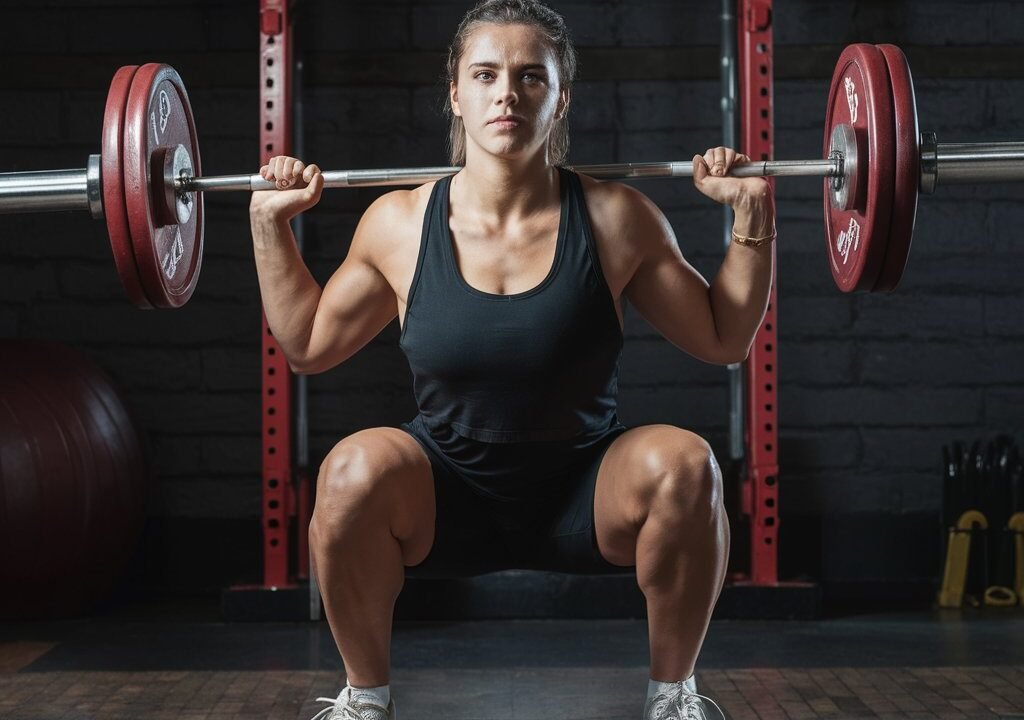
1: Introduction to Powerlifting Weight Classes:
Welcome to our comprehensive guide on understanding powerlifting weight classes. Whether you’re a seasoned powerlifter or someone new to the sport, navigating the various weight categories can be both intriguing and daunting. In this guide, we’ll delve into the intricacies of powerlifting weight classes, shedding light on their significance, structure, and how they influence competition. So, let’s strap in and explore the world of powerlifting weight classes together.
Welcome to the world of powerlifting weight classes, where competitors are grouped based on their body weights to ensure fair and exciting competitions. In this section, we’ll embark on a journey to understand the intricacies of powerlifting weight classes, exploring how they shape the sport and provide opportunities for athletes of all sizes to showcase their strength and skill.
2: Exploring the Structure of Powerlifting Weight Categories:
Powerlifting weight classes form the backbone of competitive powerlifting. They categorize athletes based on their body weight, ensuring fair competition and providing a level playing field for all participants. These weight classes vary slightly across different federations, but the underlying principle remains consistent.
Let’s delve into the structure of powerlifting weight categories, where lightweight, middleweight, and heavyweight divisions provide a platform for lifters to showcase their strength. Understanding the boundaries of each weight class allows athletes to compete comfortably within their designated categories, enhancing the overall experience of powerlifting competitions.
3: The Importance of Fair Competition: Significance of Powerlifting Weight Classes:
Powerlifting weight classes serve multiple purposes within the sport. Firstly, they allow lifters to compete against others with similar body masses, making competitions fair and equitable. This ensures that success is determined by strength and technique rather than sheer size.
Moreover, powerlifting weight classes promote inclusivity by accommodating athletes of all shapes and sizes. Whether you’re a lightweight lifter or a heavyweight powerhouse, there’s a place for you to excel within the powerlifting community.
Fairness is at the core of powerlifting competitions, and powerlifting weight classes play a pivotal role in maintaining this fairness. By categorizing athletes based on their body masses, powerlifting weight classes ensure that each lifter competes against others with similar weights, creating a level playing field where success is determined by performance rather than sheer size.
4:Finding Your Fit: Competing Within Your Weight Class:
Discovering your ideal weight class is a crucial step in your powerlifting journey. Whether you’re a lightweight lifter or a heavyweight contender, finding the right category enables you to compete against others with similar body compositions and maximize your chances of success on the platform. Let’s explore how you can find your fit and excel within your powerlifting weight class.
Competing within your designated weight class requires careful consideration of both training and nutrition. Many lifters undergo strategic weight management techniques to reach their optimal weight while maintaining strength and muscle mass. This may involve bulking or cutting phases, depending on the lifter’s goals and timeframe.
Additionally, understanding your competition within your weight class is crucial for devising a winning strategy. Analyzing past performances and identifying potential rivals can help you tailor your training regimen and approach to maximize your chances of success on the platform.
5:Strategies for Success: Training and Nutrition about Weight Classes:
Tailoring your training and nutrition to your powerlifting weight class is key to optimizing performance. Whether you’re bulking up for the heavyweight division or cutting weight for the lightweight category, strategic approaches to training and nutrition can help you reach your full potential and dominate your competition. Let’s dive into the strategies for success within powerlifting weight classes.
6: Powerlifting Weight Classes: Inclusivity and Diversity in the Sport:
Powerlifting weight classes celebrate diversity and inclusivity within the sport, providing a platform for athletes of all shapes and sizes to thrive. From petite lifters to towering titans, powerlifting embraces individuals from every background and body type, fostering a sense of community and camaraderie that transcends weight divisions.
7:Navigating Competition: Understanding How Weight Classes Impact Scoring:
In powerlifting competitions, weight classes play a significant role in determining scoring and rankings. By accounting for body weight in scoring formulas, powerlifting weight classes ensure that lifters are judged based on their relative strength and performance within their respective categories. Let’s explore how weight classes impact scoring and competition dynamics.
8: Changing Your Weight Class: Guidelines and Considerations:
Flexibility is key in powerlifting, and sometimes, athletes may consider changing their weight classes to optimize their competitive edge. Whether you’re moving up or down a weight class, understanding the guidelines and considerations for making such changes is essential. Let’s discuss the ins and outs of changing your powerlifting weight class and the factors to consider before leaping.
9: Embracing Your Category: Tips for Maximizing Performance Within Your Weight Class:
Once you’ve found your place in a powerlifting weight class, it’s time to embrace it fully and maximize your performance on the platform. From honing your technique to developing a winning mindset, there are various tips and strategies to help you thrive within your weight category. Let’s explore how you can make the most of your powerlifting weight class and elevate your performance to new heights.
10: Conclusion: Embracing Your Place in the Powerlifting Community:
As we conclude our comprehensive guide to powerlifting weight classes, remember that your journey in the sport is about more than just numbers on a scale or pounds on a barbell. It’s about embracing your unique strengths, celebrating your achievements, and fostering connections within the vibrant powerlifting community. Whether you’re a lightweight lifter, a heavyweight champion, or somewhere in between, your place in the powerlifting world is valued and respected. So, embrace your category, lift with pride, and continue to inspire others on your powerlifting journey.
Powerlifting weight classes are more than just categories; they’re the foundation of fair competition and inclusivity within the sport. By understanding the structure and significance of these divisions, lifters can navigate the powerlifting landscape with confidence, knowing that their success is determined by skill, dedication, and perseverance rather than arbitrary factors. So, whether you’re a lightweight lifter, a middleweight contender, or a heavyweight powerhouse, embrace your weight class and strive for greatness on the platform.
FAQs
Q: Can I change my weight class?
A: Yes, most powerlifting federations allow lifters to change their weight class before a competition, provided they meet the criteria for the desired category. However, it’s essential to consult with coaches and adhere to federation rules regarding weight class changes.
Q: Do powerlifting weight classes affect scoring?
A: No, powerlifting weight classes do not directly impact scoring. Athletes are scored based on the total weight lifted across the squat, bench press, and deadlift, regardless of their weight class. However, competing against lifters of similar body masses can influence rankings within a given category.
Q: How do I determine my ideal weight class?
A: Your ideal weight class depends on various factors, including your body composition, strength levels, and competitive goals. Consulting with experienced coaches and assessing your strengths and weaknesses can help you identify the most suitable weight category for optimal performance.
With this guide, we hope you now have a deeper understanding of powerlifting weight classes and how they shape the sport’s landscape. Whether you’re a beginner or a seasoned lifter, may your journey in powerlifting be filled with growth, achievement, and the thrill of competition.


2 replies on “Understanding Powerlifting Weight Classes: A Comprehensive Guide”
[…] footwear in weightlifting and provide you with all the information you need to select the best weightlifting shoes for your […]
Your writing is a true testament to your expertise and dedication to your craft. I’m continually impressed by the depth of your knowledge and the clarity of your explanations. Keep up the phenomenal work!